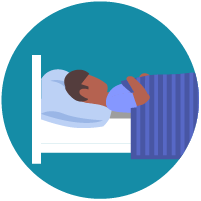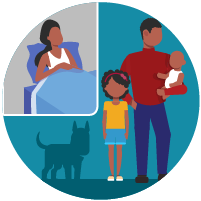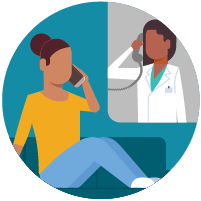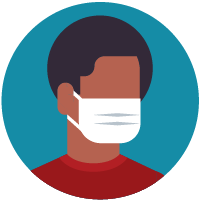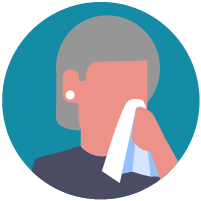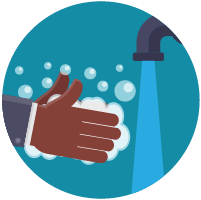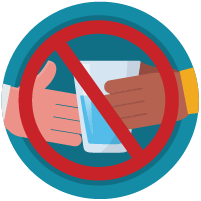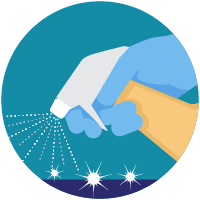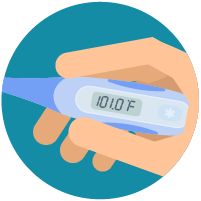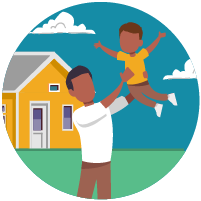Bicycling, running, walking, and hiking in the time of COVID-19: What political leaders, event organizers, and people who walk, run, hike, and bicycle need to know and do as COVID-19 restrictions sweep across Missouri and the U.S.
As Missouri, the U.S., and the world considers how to deal with the COVID-19 pandemic, it is worth considering how bicycling and walking fit into the picture, as an important part of our economy, as resilient and economical transportation options, and as important ways to maintain physical and mental health during difficult times.
Topics covered below:
- Political leaders: Carefully consider the importance of bicycling and walking transportation as a part of community resilience and COVID-19 planning; include bicycle shops as essential transportation businesses
-
Weekly and monthly rides, runs, walks, and hikes: Any special tips?
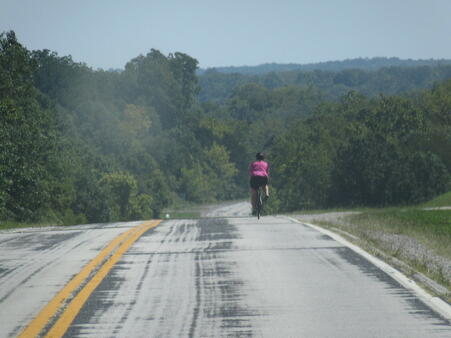
For political leaders: Please carefully consider the importance of bicycling and walking as part of COVID-19 planning; Include bicycle shops and bicycle repair in the lists of essential businesses
Please strongly consider including bicycle shops on any list of essential businesses that can remain open during COVID-19 business closing. Bicycling is an important part of the state's resilience against coronavirus, allowing essential individual transportation and fitness activities to continue for citizens of all income levels, while maintaining social distancing.
- Several U.S. cities and many across the world have included bicycle shops and bicycle repair as essential businesses that maybe remain open during COVID-19 closures and restrictions. Others have clarified, at some point after their initial announcement, that bicycle shops qualify as essential transportation-related businesses. Bicycle shops and and repair facilities must, of course, take appropriate measures to protect staff and customers from spread of COVID-19, including cleaning and disinfecting, limiting the number of customers, limiting contact between customers and staff, and following all other best practice recommendations.
- Hundreds of thousands of Missourians already depend on bicycling for a regular daily transportation. So closing bike shops has a similar effect on them that closing gas stations or automobile repair centers would for car drivers.
- In areas that have been hit hard by COVID-19--including areas of the U.S. harder-hit than Missouri currently is--bicycle use has increased dramatically, as it is an option for local transportation that allows for that social distancing, has very low cost, can be done by a large segment of the population, allows for independence, and helps maintain physical fitness and health. Even in areas where non-essential transportation has been reduced, a degree of essential transportation is maintained and travel by bicycle is often an important mode citizens use for those essential trips.
- Additionally, bicycling is an alternative to mass transportation and ride sharing or car sharing for many people. Not everyone has the option of bicycling, of course. But many do--not everyone, of course. When some people who ordinarily travel by mass transit and ride sharing/car sharing can do that essential travel by bicycle instead, it leads to reduced crowding and thus greater availability and safety in using public transportation and ride/car sharing for those who really need it most.
 More people are turning to bicycling for basic transportation when coronavirus restrictions are in place
More people are turning to bicycling for basic transportation when coronavirus restrictions are in place
- Physical and emotion health are more important than ever during a crisis, and so people are looking for safe physical activities that don't involve groups or crowds. We have seen in hard-hit countries that at times it is necessary to restrict all unnecessary travel for periods of time. In that case it may make the most sense to consider bicycling on the same basis as other transportation modes. But when less stringent restrictions are in place, solitary outdoor bicycling and walking--or bicycling/walking/hiking together with household members who are already living together--is one of the best and safest ways for people to maintain their physical and mental health. With gyms and fitness centers closed, these options become one of the most practical--and safe--ways for people to get much-needed daily physical fitness and outdoor time while still maintaining social distance.
- Millions of school children are out of school and not able to participate in their usual PE classes and other outdoor group activities like soccer, dance, and so on. Bicycling alone or in small family groups becomes one of the most attractive and easily available physical fitness activities available to them. And it is one of the safest in terms of reducing spread of coronavirus.
All of the above combined means that bike shops have seen demand for bicycle repairs and sales go up quite significantly as coronavirus travel restrictions have been put in place. We are seeing this in Missouri already. And cities have seen the proportion of bicycle travel go up significantly as it becomes a better, safer option than others available.
Businesses, individuals and organizations are free to use, adapt, or edit the above recommendations when contacting your own elected representative or in drafting your own suggestions and recommendations for your local area.
Sources and further resources for above recommendations:
-
Bike shops, deemed ‘essential,’ boom as people seek ways to travel solo
-
Bike shop business booming as COVID-19 takes New Yorkers off mass transit
-
NY Gov Cuomo declares bike shops essential, can stay open during COVID-19 lockdown
- Do Not Ban Bicycling In Covid-19 Crackdown, Industry And Academics Urge U.K. Government
 Bike shops across Missouri--like Big Shark Bicycle Co. in the St Louis area--are seeing increased demand as COVID-19 restrictions pick up, and coming up with creative ways to meet customer needs and keep those bikes rolling, while still maintaining safety and social distance
Bike shops across Missouri--like Big Shark Bicycle Co. in the St Louis area--are seeing increased demand as COVID-19 restrictions pick up, and coming up with creative ways to meet customer needs and keep those bikes rolling, while still maintaining safety and social distance
For citizens: Bicycling, walking, running, and hiking alone or in small household groups is one of the best options for maintaining physical and emotion health during COVID-19 restrictions
If your area is under restrictions to help control the COVID-19 pandemic, bicycling, walking, running, and hiking alone or with members of your immediate household may be one of your best options for getting in your daily exercise and outdoor time.
That is one of the best ways to maintain and improve your health any time of the year, but especially when options like gyms, fitness centers, and group activities are restricted by local rules or by the danger of the pandemic.
For example, the San Francisco Bicycle Coalition says:
Social distancing is necessary to mitigate the spread of coronavirus — but we know social isolation is not easy. Bicycling, whether for everyday transportation or recreation, is still a safe activity, and we encourage you to keep riding . . . and enjoying all of the benefits it provides your physical, mental and environmental health.
Dr. Michael Roshon noted that riding bikes also carries little risk of contamination or infection. For bicyclists, Roshon notes that you are very unlikely to contract COVID-19 while riding outside, and especially not while riding by yourself.
As of March 21st, 2020, St Louis City and St Louis County have adopted the most stringent "shelter in place" orders in Missouri. However, St Louis Mayor Krewson and St Louis county Executive Page were quick to clarify that people can and should remain active, continue essential activities, and go outdoors for recreation and exercise while maintaining social distancing:
Krewson said people may still leave their homes for carryout from bars or restaurants, to go to work for “most businesses,” to take a walk or exercise outside or for doctor appointments and other “essential activities."
Hiking with family and household members is a great way to enjoy Missouri's great outdoors--and an even better way to get some exercise and mental health time during the COVID-19 restrictions
“You should stay home, but you will still be able to go to the pharmacy, take your cat to the vet, and make your doctor appointment,” Page tweeted. “County parks will remain open. In fact, you should get outside to take a jog or go on a hike. But remember: social distancing.”
Tips for rides, walks, runs, and hikes to help limit the spread of COVID-19:
- If you think you have been exposed, or you or a household member has tested positive for COVID-19, self quarantine. In that situation, the recommendation is, don't go outside at all.
- Consider going alone or with household members you are already living together with
- Consider the full trip, not just the bicycling/walking/hiking portion:
- Consider carrying your own food & supplies so you don't need to stop at convenience stores or restaurants.
- If you do stop to eat, carry-out or other low-contact transactions are options.
- Consider traveling close to home so as to avoid the need to stop at public restrooms or other places where people gather.
- Consider carrying your own food & supplies so you don't need to stop at convenience stores or restaurants.
- Maintain six feet distance from others, whether on the road, the sidewalk, or the trail
- Consider riding, walking, hiking, or running in places that are less crowded or congested to make maintaining the needed distance from others easier
- Consider riding, walking, hiking, or running in places that are less crowded or congested to make maintaining the needed distance from others easier
- Carry hand sanitizer. Wash hands before leaving and upon return; use sanitizer on other occasions.
Some high points from the video above, a USA Cycling Q&A with Dr. Michael Roshon:
- If you're going to ride with others, do so in a small group of 3-4 people you know very well. Ride with the same group of people consistently vs a new group of 3-4 every time. Ask them about how they've been feeling, about COVID-19 symptoms such as fever and cough, and recent travel. Those with any symptoms or who have traveled in areas with COVID-19 exposure should not participate.
- Practice good hand hygiene.
- Get your sleep - very important for general health and immune system function.
- Exercize, but don't overdo it. Overly hard workouts can suppress your immune system.
- Don't spit or snot-rocket. Per Amy Treakle, M.D., an infectious disease specialist:
Spreading COVID-19 via spit is possible . . . “COVID-19 is spread by respiratory droplets when a person coughs or sneezes, and transmission may occur when these droplets enter the mouths, noses, or eyes of people who are nearby. Spit contains saliva but could also contain sputum from the lungs or drainage from the posterior nasopharynx,” she says.
Sorry, snot rocketeers: Treakle says shooting mucus out of your nose isn’t any better. “Having witnessed and participated in races, I think it’s appropriate to note that this would apply to projectile nasal secretions.”
- Local regulations such as "shelter in place" may prohibit outdoor recreation and limit transportation to essential trips only. Bicycling, walking, or running as a transportation option for those essential trips may still be an allowed, even if recreational trips are not allowed. Whatever the local regulations, please heed them.
- Ride safe. One of the major dangers countries and states have seen as COVID-19 advances is that hospitals, emergency rooms, and intensive care units become overwhelmed. You don't want to add to the health care overload with an injury--and you probably don't want to make unnecessary trips to medical facilities that may be filled with COVID-19 patients, either. Especially if you ride, walk, hike, and run with some extra care, those activities are as safe or safer than driving or other transportation or exercise options. But this is a good time use your common sense, avoid distraction, and avoid unnecessary risks.
Sources and further resources for above recommendations:
- Outdoor bike rides recommended as a way to maintain physical and emotional health during the COVID-19 outbreak in Palo Alto, Santa Clara County, Fresno, Charlotteville, in Great Britain
- Evidence indicates coronavirus risk less outside than inside, in close contact with other people
- American Heart Association recommends outdoor individual activity as a safer alternative to indoor exercise during the outbreak
- Bicycle Colorado's excellent summary of bicycling and COVID-19
For event organizers: What about my bicycling, running, walking, hiking event, meeting, or conference?
Thousands of events across the country and across the world have been cancelled, postponed, or held as virtual events.
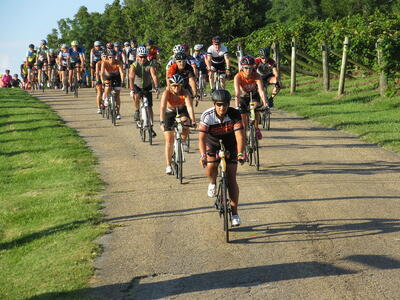
We recently participated in a virtual National Bike Summit and congressional meetings via teleconference; the UCI announced that all bicycle races of all classifications worldwide are cancelled through at least April 3rd; the International Mountain Biking Association has asked mountain bikers to cancel or postpone races, trail work, and group rides for now.
So what about your local bicycle ride, run, walk, hike, meeting, or conference?
- Many jurisdictions are prohibiting gatherings or meetings of over 5 or 10 people. Whatever the local guidance or regulations, please follow it in spirit as well to the letter.
- Travel is one of the main ways COVID-19 spreads and meetings, conferences, sporting events, religious meetings, and similar events are responsible for much of the spread of COVID-19 across the U.S. to date. So you may want to consider not only the health and safety of your event staff and participants, but also the health and safety of community members of the area surrounding your event and where event participants travel from, and also whether you want your event known as a place that furthered the spread of COVID-19--as has happened with a number of recent events and conferences.
- Consider converting your event to an online or virtual event or--for meetings and conferences--to a teleconference or online meeting.
- Even rides, runs, walks, and hikes can be held as virtual events:
- Use online software like Swift that allows people to ride a trainer with a group of online friends, and/or
- Encourage ndividual or local rides, runs, walks, and hikes--in participant in their own local area, and alone or with just a few familiy members or close friends--but turn it into a social event via the power of social media
- You may be able to offer some support to individual riders in a particular region or metro area by offering on-call SAG support for participants who have mechanical problems or need a ride home, or other similar services that will help participants feel supported but do not require large numbers of people to meet or gather.
- Depending on the local situation and recommendations, it may be possible to disperse the event or hold small "mini-events" rather than one large gathering. For example, rather than one larger bike ride with 200 participants, perhaps you hold 20 mini-events with up to 10 participants, each meeting and riding from a different location, and each practicing social distancing among its 5-10 participants.
- Please consult with your local health agency or authorities before considering and option like this.
- Please consult with your local health agency or authorities before considering and option like this.
- Consider the full impact of your event on the potential spread of COVID-19 on participants and the community--not just the ride, run, walk, or hike itself.
- Perhaps the event itself is held with "social distancing" and participants remain separate and distant from staff, volunteers, and each other
- Despite this, participants, staff, and volunteers still must travel to the event
- Many participants, staff, and volunteers must travel, stay in hotels, eat in restaurants, etc
- Even if official event gatherings and social events are cancelled, participants may spontaneously gather at bars, restaurants, and other social spaces. The impact of these associated informal events on the spread of COVID-19 may be far greater than that of the official event itself.
- Consider the ultimate goals and aims of your event. Could some or all of them be accomplished via a virtual or online event?
- Carefully read and consider the CDC guidance for mass gatherings and events.
What about my weekly or monthly group ride, walk, hike, or run?
For the most part, the recommendations above cover the situation regular weekly or monthly groups rides. But there are some special circumstances:
- As with other types of events, you may be able to encourage individual participation at your event's regular day & time and replace the normal social aspect of the event with social media or similar.
 Fun group walks like this are, unfortunately, just what we need to avoid to slow the spread of COVID-19. But if each individual or family walked alone, they would still see the same fitness and mental health benefits, while helping stop the spread of COVID-19.
Fun group walks like this are, unfortunately, just what we need to avoid to slow the spread of COVID-19. But if each individual or family walked alone, they would still see the same fitness and mental health benefits, while helping stop the spread of COVID-19.
- Some bike clubs and outdoor recreation groups around the state already run regular weekly or month events by marking a route and then letting participants ride the route on their own time schedule and convenience. A system like that--a designated route but a widely dispersed time frame--can encourage participation and a group feel while maintaining the needed social distance.
- A system for on-call SAG support along the route as needed could help riders to ride alone, with members of their household, or with very small/close friend groups (as described above) and still have the confidence to participate on the route with the confidence of having a good backup plan.
- Planning, helping, and encouraging participants to be able to ride/run/hike/walk the course without social interactions along the way can help encourage participation and help participants feel confident they can participate in the event without unneeded exposure to coronavirus. That may consist of encouraging participants to carry all needed water, food, and other supplies, planning needed bathroom breaks (or perhaps planning routes short enough to avoid the need for bathroom breaks), etc.
What To Do if You Are Sick
The advice and recommendations below are directly from the CDC web site (printer-friendly version):
phone iconCall your doctor: If you think you have been exposed to COVID-19 and develop a fever and symptoms, such as cough or difficulty breathing, call your healthcare provider for medical advice
Steps to help prevent the spread of COVID-19 if you are sick
Follow the steps below: If you are sick with COVID-19 or think you might have it, follow the steps below to help protect other people in your home and community.
Stay home except to get medical care
- Stay home: People who are mildly ill with COVID-19 are able to recover at home. Do not leave, except to get medical care. Do not visit public areas.
- Stay in touch with your doctor. Call before you get medical care. Be sure to get care if you feel worse or you think it is an emergency.
- Avoid public transportation: Avoid using public transportation, ride-sharing, or taxis.
Separate yourself from other people in your home, this is known as home isolation
- Stay away from others: As much as possible, you should stay in a specific “sick room” and away from other people in your home. Use a separate bathroom, if available.
- Limit contact with pets & animals: You should restrict contact with pets and other animals, just like you would around other people.
- Although there have not been reports of pets or other animals becoming sick with COVID-19, it is still recommended that people with the virus limit contact with animals until more information is known.
- When possible, have another member of your household care for your animals while you are sick with COVID-19. If you must care for your pet or be around animals while you are sick, wash your hands before and after you interact with them. See COVID-19 and Animals for more information.
Call ahead before visiting your doctor
- Call ahead: If you have a medical appointment, call your doctor’s office or emergency department, and tell them you have or may have COVID-19. This will help the office protect themselves and other patients.
Wear a facemask if you are sick
- If you are sick: You should wear a facemask when you are around other people and before you enter a healthcare provider’s office.
- If you are caring for others: If the person who is sick is not able to wear a facemask (for example, because it causes trouble breathing), then people who live in the home should stay in a different room. When caregivers enter the room of the sick person, they should wear a facemask. Visitors, other than caregivers, are not recommended.
Cover your coughs and sneezes
- Cover: Cover your mouth and nose with a tissue when you cough or sneeze.
- Dispose: Throw used tissues in a lined trash can.
- Wash hands: Immediately wash your hands with soap and water for at least 20 seconds. If soap and water are not available, clean your hands with an alcohol-based hand sanitizer that contains at least 60% alcohol.
Clean your hands often
- Wash hands: Wash your hands often with soap and water for at least 20 seconds. This is especially important after blowing your nose, coughing, or sneezing; going to the bathroom; and before eating or preparing food.
- Hand sanitizer: If soap and water are not available, use an alcohol-based hand sanitizer with at least 60% alcohol, covering all surfaces of your hands and rubbing them together until they feel dry.
- Soap and water: Soap and water are the best option, especially if hands are visibly dirty.
- Avoid touching: Avoid touching your eyes, nose, and mouth with unwashed hands.
Avoid sharing personal household items
- Do not share: Do not share dishes, drinking glasses, cups, eating utensils, towels, or bedding with other people in your home.
- Wash thoroughly after use: After using these items, wash them thoroughly with soap and water or put in the dishwasher.
Clean all “high-touch” surfaces everydayClean high-touch surfaces in your isolation area (“sick room” and bathroom) every day; let a caregiver clean and disinfect high-touch surfaces in other areas of the home.
- Clean and disinfect: Routinely clean high-touch surfaces in your “sick room” and bathroom. Let someone else clean and disinfect surfaces in common areas, but not your bedroom and bathroom.
- If a caregiver or other person needs to clean and disinfect a sick person’s bedroom or bathroom, they should do so on an as-needed basis. The caregiver/other person should wear a mask and wait as long as possible after the sick person has used the bathroom.
High-touch surfaces include phones, remote controls, counters, tabletops, doorknobs, bathroom fixtures, toilets, keyboards, tablets, and bedside tables.
- Clean and disinfect areas that may have blood, stool, or body fluids on them.
- Household cleaners and disinfectants: Clean the area or item with soap and water or another detergent if it is dirty. Then, use a household disinfectant.
- Be sure to follow the instructions on the label to ensure safe and effective use of the product. Many products recommend keeping the surface wet for several minutes to ensure germs are killed. Many also recommend precautions such as wearing gloves and making sure you have good ventilation during use of the product.
- Most EPA-registered household disinfectants should be effective. A full list of disinfectants can be found hereexternal icon.
Monitor your symptoms
- Seek medical attention, but call first: Seek medical care right away if your illness is worsening (for example, if you have difficulty breathing).
- Call your doctor before going in: Before going to the doctor’s office or emergency room, call ahead and tell them your symptoms. They will tell you what to do.
- Wear a facemask: If possible, put on a facemask before you enter the building. If you can’t put on a facemask, try to keep a safe distance from other people (at least 6 feet away). This will help protect the people in the office or waiting room.
- Follow care instructions from your healthcare provider and local health department: Your local health authorities will give instructions on checking your symptoms and reporting information.
If you develop emergency warning signs for COVID-19 get medical attention immediately. Emergency warning signs include*:
- Difficulty breathing or shortness of breath
- Persistent pain or pressure in the chest
- New confusion or inability to arouse
- Bluish lips or face
*This list is not all inclusive. Please consult your medical provider for any other symptoms that are severe or concerning.
alert iconCall 911 if you have a medical emergency: If you have a medical emergency and need to call 911, notify the operator that you have or think you might have, COVID-19. If possible, put on a facemask before medical help arrives.
How to discontinue home isolation
- People with COVID-19 who have stayed home (home isolated) can stop home isolation under the following conditions:
- If you will not have a test to determine if you are still contagious, you can leave home after these three things have happened:
- You have had no fever for at least 72 hours (that is three full days of no fever without the use medicine that reduces fevers)
AND- other symptoms have improved (for example, when your cough or shortness of breath have improved)
AND- at least 7 days have passed since your symptoms first appeared
- If you will be tested to determine if you are still contagious, you can leave home after these three things have happened:
- You no longer have a fever (without the use medicine that reduces fevers)
AND- other symptoms have improved (for example, when your cough or shortness of breath have improved)
AND
you received two negative tests in a row, 24 hours apart. Your doctor will follow CDC guideline- In all cases, follow the guidance of your healthcare provider and local health department. The decision to stop home isolation should be made in consultation with your healthcare provider and state and local health departments. Local decisions depend on local circumstances.
More information is available here.
Stay safe!
Promoting and encouraging more, better, and safer bicycling, walking, running, hiking, and trail use across Missouri is the primary objective of MoBikeFed's Vision for Bicycling and Walking in Missouri. Providing information and guidance for political leaders, citizens, event organizers and promoters, and others across Missouri about the best ways to achieve that goal in all situations and circumstances is one way we work to achieve that goal.
Your ongoing membership and generous financial support helps turn our Vision into reality. And in times like these, we need your membership and support more than ever!
Join MoBikeFed's Advocacy Network
Working together we make a real difference! Join our advocacy network:
Related pages
Current topics...
Archives...
- Home
- JOIN/DONATE
- News/Info
- Missouri Bicycling, Running, Trails
- Bicycle Skills and Safety
- Missouri Bike/Ped Law
- Clubs and Organizations
- Bike Shops
- Running Shops
- Bicycling, Running, Trails-related Businesses
- Ride, Run, Walk, Hike, Triathlon, and Events Calendars
- Bicycles on Amtrak
- Maps and Routes
- Trails and Trail Maps
- IBikeMO.org
- Planning a Missouri bicycle trip
- Gravel and Bikepacking Maps & Routes
- Bicycle & Touring Routes
- Advocacy
- Campaigns
- Our Legislative Platform
- Complete Streets
- Statewide Rock Island Trail
- Statewide Trail Vision - Quad State Trail
- Bicycle Friendly Missouri
- Walk Friendly Missouri
- Safe Routes to School
- MoDOT funding crisis
- High Priority Bike/Ped Project List
- Anti-harassment laws in cities & statewide
- Updating the basic bicycle law
- Our Vision for MoDOT
- Our Vision for MPOs/RPCs
- Our Vision for Cities & Counties
- Bicycle, pedestrian, trails plans across MO
- Protecting Vulnerable Road Users
- Vision Zero
- Missouri Trail Towns
- Store
- About


